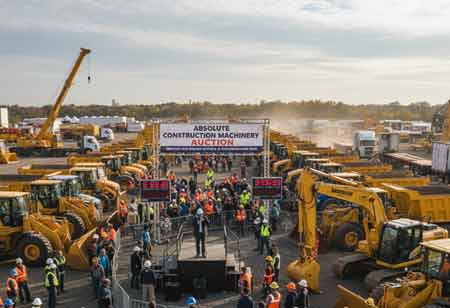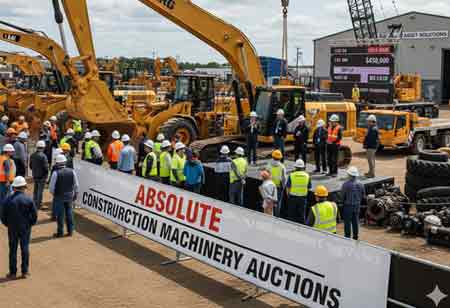Thank you for Subscribing to Construction Business Review Weekly Brief
Specials
- Apartment and Condominium Contractors Canada
- Decking Canada
- Architectural Glass Europe
- MEP APAC
- Construction Saudi Arabia
- German Apartment and Condominium Contractors
- Construction Law APAC
- Outdoor Construction
- Foundation Construction Canada
- MEP Canada
- Kitchen and Bath
- Cold Storage Construction APAC
- Precast Concrete Europe
- Construction Staffing Europe
- Pre-Construction Services
- Flooring System APAC
- Scaffolding Canada
- Swimming Pool Construction Canada
- Construction Management Canada
- Cold Storage Construction Canada
- Flooring Systems Europe
- Residential Construction
- Concrete Canada
- Construction Cladding Europe
- Construction Cladding APAC
- Concretes, Aggregates and Construction Materials APAC
- Concretes, Aggregates and Construction Materials Europe
- Commercial Contractors Europe
- Commercial Contractors APAC
- Dummy
- Construction Insulation, Coating and Waterproofing
- Construction Management APAC
- Landscaping Canada
- Construction Coating Europe
- Construction Tech Startups Europe
- Insulation Services Europe
- Mechanical Contractor Canada
- Mould Remediation and Testing Europe
- Swimming Pool Construction APAC
- Building Sealing Solutions Europe
- Construction Engineering Services
- Mechanical Electrical and Plumbing
- Roofing Systems Europe
- Architectural Glass APAC
- Startups APAC
- Construction Forensic and Owners Representative
- Flooring System
- Waterproofing APAC
- Wall Systems
- Safety and Compliance Europe
- Construction Bidding and Auctions
- Modular and Prefab Construction
- Architectural Glass
- Construction MENA
- Construction Demolition and Recycling Europe
- Modular Construction Europe
- Construction Interiors
- Steel Building APAC
- HVAC
- Doors and windows
- Construction Latam
- Building Information Modeling APAC
- Sustainable Construction APAC
- Building Restoration and Maintenance
- Commercial Contractors
- Specialty Construction
- Construction Engineering Canada
- Construction Engineering MENA
- Modular Construction Canada
- Modular Construction APAC
- Roofing and Siding Systems
- Workforce Management and Staffing
- Roofing Systems APAC
- Construction Consulting
- Steel Building Europe
- Construction Demolition and Recycling APAC
- Safety and Compliance APAC
- Concretes, Aggregates and Construction Materials
- Construction Cladding
The Future of Absolute Construction Machinery Auctions
The absolute auction model for construction machinery evolves into a digital, global marketplace that offers certainty, liquidity, and transparency, maximizing value throughout the asset lifecycle.

By
Construction Business Review | Monday, November 17, 2025
Stay ahead of the industry with exclusive feature stories on the top companies, expert insights and the latest news delivered straight to your inbox. Subscribe today.
The global construction industry—an essential barometer of economic vitality—relies on the iron at its core: the heavy machinery that drives infrastructure, commerce, and development worldwide. Like any high-value capital asset, this equipment possesses a lifecycle, and managing its transition from one owner to the next is a critical financial function.
For decades, the auction has been the primary method for remarketing this asset. Among its different forms, one stands out for its clarity and power: the absolute auction. Defined by its core principle of no minimums and no reserves, the asset sells to the highest bidder, period. This method is not merely a sales tactic; it is a philosophy of true market discovery.
Once confined to dusty yards and regional crowds, this absolute auction model is now at the epicenter of a profound technological and logistical transformation. It is evolving from a simple, physical event into a sophisticated, data-driven, and truly global marketplace. The future of absolute auctions is not just about selling equipment; it’s about creating an intelligent, frictionless ecosystem for asset lifecycle management.
Certainty and True Market Value
The core appeal of the absolute auction method remains its two most powerful outputs: certainty and liquidity. In a capital-intensive industry, the ability to strategically manage a fleet—retiring aging assets to make way for new technology or realigning inventory after a project's completion—is paramount.
The absolute model provides what other sales channels cannot: a fixed date of sale. For a fleet manager or financial controller, this certainty is invaluable. It removes ambiguity from the balance sheet and allows for precise capital planning. There is no protracted negotiation period, no assets lingering on the books for months. On auction day, the asset will be sold. This certainty yields the second benefit: unparalleled liquidity. The absolute auction is the industry’s most efficient mechanism for converting "iron to cash." This rapid velocity of capital is essential for agility, allowing organizations to reinvest in new equipment, fund new projects, or strategically pivot in a dynamic market.
From Local Yard to Global Stage
The most significant accelerant in the evolution of absolute auctions is digitalization. The paradigm has shifted permanently from a physical-centric model to a digital-first environment. What was once a local event, limited by geography, has exploded into a global marketplace accessible from any smartphone or desktop.
Online bidding platforms and hybrid event technologies have shattered geographical barriers. A contractor in South America can now compete in real-time with a dealer in Southeast Asia and a rental fleet in North America for a single piece of equipment located on another continent entirely. This globalization of the buyer pool is the single most significant driver of value. An asset's worth is no longer determined by its local market but by its highest-value use anywhere in the world.
This digital transformation extends to accessibility. Bidders no longer need to spend days traveling. They can participate from a job site, their office, or their home. This convenience has democratized access, dramatically expanding the number of participants in any given sale. More bidders create deeper, more competitive bidding, which in turn reinforces the absolute method's ability to achieve actual market value.
The Rise of Total Transparency
The future of online auctions is built on a new currency: trust, underwritten by data. To bid confidently on a six-figure asset sight-unseen, buyers require a new level of total transparency. This is being achieved through a multi-layered approach to asset information. The standard is no longer a few photographs. It is now a comprehensive digital file: high-resolution photo galleries, 360-degree internal and external videos, and function-test videos showing the engine starting, the hydraulics operating, and the machine in motion.
Even more revolutionary is the integration of telematics. Modern construction equipment is a rolling databank, equipped with sensors that track thousands of data points. This information—verifiable engine hours, fuel consumption history, idle-versus-working time, and diagnostic fault codes—is now being pulled directly from the machine's electronic control module and attached to the auction lot.
This verifiable, machine-generated data provides an unbiased history of the asset's life and condition, moving far beyond seller-reported descriptions. As this trend accelerates, data analytics and artificial intelligence are being layered on top. By aggregating data from hundreds of thousands of past transactions, auction platforms can provide sophisticated valuation tools, helping both sellers and buyers understand how specifications, condition, and even seasonal timing impact price.
The future of the absolute auction is not just the transaction itself, but the frictionless ecosystem built around it. Leading platforms are evolving into end-to-end service providers that manage every aspect of the asset's transition. This includes fully integrated logistics. The sale is seamlessly connected to a global network of transportation partners, instantly providing buyers with quotes for dismantling, shipping, and customs clearance—whether moving a machine across the state or across an ocean.
Embedded finance is another critical component. By integrating pre-approved financing and capital solutions directly into the bidding platform, more buyers are empowered to compete with the purchasing power they need. This expands the buyer pool and increases the market's overall velocity. Value-added services are also becoming standard. Sellers can access pre-auction services, such as refurbishment, painting, and detailed inspections, all designed to maximize the asset's appeal and final sale value in the global marketplace.
The absolute construction machinery auction has evolved far beyond its origins. What was once a simple, often localized, liquidation tool has transformed into a high-velocity, technologically sophisticated, and truly global remarketing channel. Powered by digital platforms, validated by transparent data, and supported by a seamless logistics and finance ecosystem, this model is unlocking the maximum value of heavy assets. The enduring philosophy of "no reserve" remains the transparent core of this evolution, ensuring that the market itself—now larger, faster, and more informed than ever—has the final, absolute say. The future is not just about selling a machine; it is about providing a predictable, intelligent, and trusted solution for the entire asset lifecycle.





